Premium Only Content
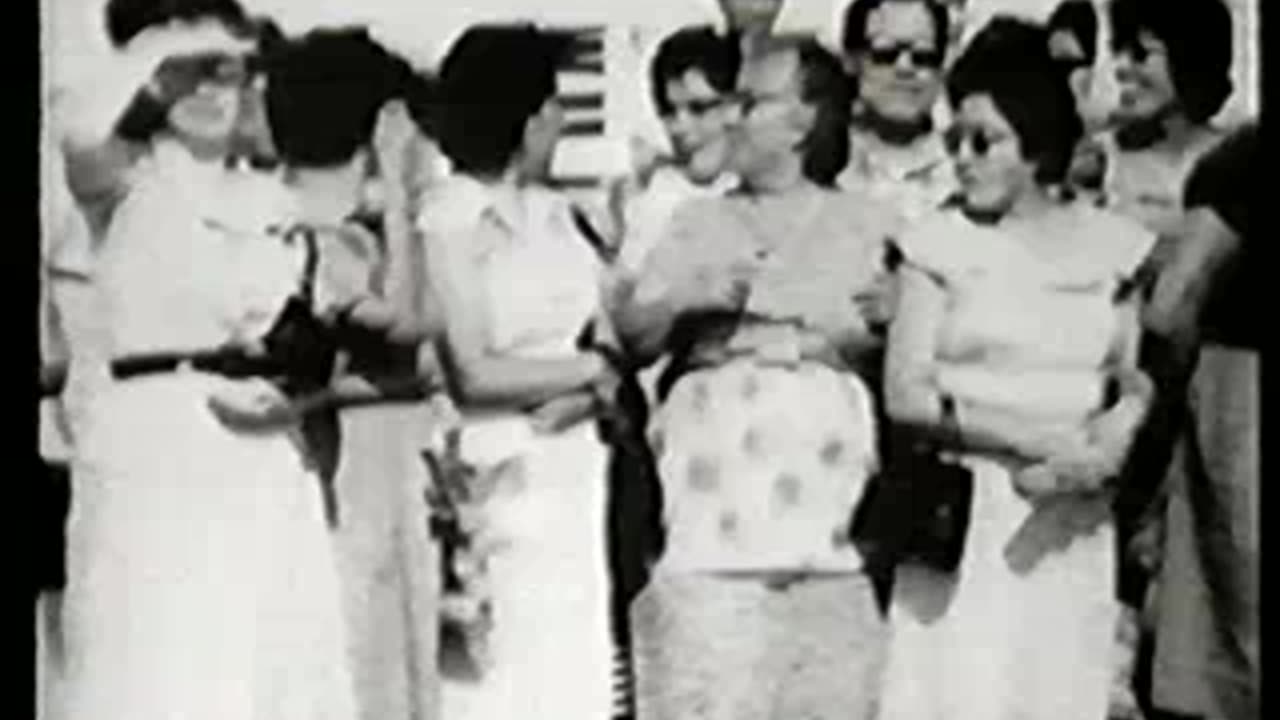
A People's History of Texas Labor Unions - Part 2
The dark side of history: https://thememoryhole.substack.com/
The nature and power of organized labor in the United States is the outcome of historical tensions among counter-acting forces involving workplace rights, wages, working hours, political expression, labor laws, and other working conditions. Organized unions and their umbrella labor federations such as the AFL–CIO and citywide federations have competed, evolved, merged, and split against a backdrop of changing values and priorities, and periodic federal government intervention.
In most industrial nations, the labor movement sponsored its own political parties, with the US as a conspicuous exception. Both major American parties vied for union votes, with the Democratic Party usually much more successful. Labor unions became a central element of the New Deal coalition that dominated national politics from the 1930s into the mid-1960s during the Fifth Party System.[1] Liberal Republicans who supported unions in the Northeast lost power after 1964.[2][3] In recent decades, an enduring alliance was formed between labor unions and the Democrats, whereas the Republican Party has become hostile to unions and collective bargaining rights.[4]
The history of organized labor has been a specialty of scholars since the 1890s, and has produced a large amount of scholarly literature focused on the structure of organized unions. In the 1960s, as social history gained popularity, a new emphasis emerged on the history of workers, including unorganized workers, and with special regard to gender and race. This is called "the new labor history". Much scholarship has attempted to bring the social history perspectives into the study of organized labor.[5]
By most measures, the strength of organized labor has declined in the United States over recent decades.[6]
Organized labor prior to 1900
The history of labor disputes in America substantially precedes the Revolutionary period. In 1636, for instance, there was a fishermen's strike on an island off the coast of Maine and in 1677 twelve carmen were fined for going on strike in New York City.[7] However, most instances of labor unrest during the colonial period were temporary and isolated, and rarely resulted in the formation of permanent groups of laborers for negotiation purposes. Little legal recourse was available to those injured by the unrest, because strikes were not typically considered illegal. The only known case of criminal prosecution of workers in the colonial era occurred as a result of a carpenters' strike in Savannah, Georgia, in 1746.[7]
Legality and Hunt (1842)
Main article: Commonwealth v. Hunt
By the early 19th century, the career path for most artisans still involved apprenticeship under a master, followed by moving into independent production.[8] However, over the course of the Industrial Revolution, this model rapidly changed, particularly in the major metropolitan areas. For instance, in Boston in 1790, the vast majority of the 1,300 artisans in the city described themselves as "master workman". By 1815, journeymen workers without independent means of production had displaced these "masters" as the majority. By that time journeymen also outnumbered masters in New York City and Philadelphia.[9] This shift occurred as a result of large-scale transatlantic and rural-urban migration. Migration into the coastal cities created a larger population of potential laborers, which in turn allowed controllers of capital to invest in labor-intensive enterprises on a larger scale. Craft workers found that these changes launched them into competition with each other to a degree that they had not experienced previously, which limited their opportunities and created substantial risks of downward mobility that had not existed prior to that time.[8]
These conditions led to the first labor combination cases in America. Over the first half of the 19th century, there are twenty-three known cases of indictment and prosecution for criminal conspiracy, taking place in six states: Pennsylvania, Maryland, New York, Louisiana, Massachusetts, and Virginia.[10] The central question in these cases was invariably whether workmen in combination would be permitted to use their collective bargaining power to obtain benefits—increased wages, decreased hours, or improved conditions—which were beyond their ability to obtain as individuals. The cases overwhelmingly resulted in convictions. However, in most instances the plaintiffs' desire was to establish favorable precedent, not to impose harsh penalties, and the fines were typically modest.[11]
One of the central themes of the cases prior to the landmark decision in Commonwealth v. Hunt, which settled the legality of unions, was the applicability of the English common law in post-revolutionary America. Whether the English common law applied—and in particular whether the common law notion that a conspiracy to raise wages was illegal applied—was frequently the subject of debate between the defense and the prosecution.[12] For instance, in Commonwealth v. Pullis, a case in 1806 against a combination of journeymen cordwainers in Philadelphia for conspiracy to raise their wages, the defense attorneys referred to the common law as arbitrary and unknowable and instead praised the legislature as the embodiment of the democratic promise of the revolution.[13] In ruling that a combination to raise wages was per se illegal, Recorder Moses Levy strongly disagreed, writing that "[t]he acts of the legislature form but a small part of that code from which the citizen is to learn his duties . . . [i]t is in the volumes of the common law we are to seek for information in the far greater number, as well as the most important causes that come before our tribunals."[13]
As a result of the spate of convictions against combinations of laborers, the typical narrative of early American labor law states that, prior to Hunt in Massachusetts in 1842, peaceable combinations of workingmen to raise wages, shorten hours or ensure employment, were illegal in the United States, as they had been under English common law.[12] In England, criminal conspiracy laws were first held to include combinations in restraint of trade in the Court of Star Chamber early in the 17th century.[14] The precedent was solidified in 1721 by R v Journeymen Tailors of Cambridge, which found tailors guilty of a conspiracy to raise wages.[15] Leonard Levy went so far as to refer to Hunt as the "Magna Carta of American trade-unionism",[16] illustrating its perceived standing as the major point of divergence in the American and English legal treatment of unions which, "removed the stigma of criminality from labor organizations".[16]
However, case law in America prior to Hunt was mixed. Pullis was actually unusual in strictly following the English common law and holding that a combination to raise wages was by itself illegal. More often combination cases prior to Hunt did not hold that unions were illegal per se, but rather found some other justification for a conviction.[17] After Pullis in 1806, eighteen other prosecutions of laborers for conspiracies followed within the next three decades. However, only one such case, People v. Fisher, also held that a combination for the purpose of raising wages was illegal. Several other cases held that the methods used by the unions, rather than the unions themselves, were illegal.[17] For instance, in People v. Melvin, cordwainers were again convicted of a conspiracy to raise wages. Unlike in Pullis, however, the court held that the combination's existence itself was not unlawful, but nevertheless reached a conviction because the cordwainers had refused to work for any master who paid lower wages, or with any laborer who accepted lower wages than what the combination had stipulated. The court held that methods used to obtain higher wages would be unlawful if they were judged to be deleterious to the general welfare of the community.[18] Commonwealth v. Morrow continued to refine this standard, stating that, "an agreement of two or more to the prejudice of the rights of others or of society" would be illegal.[19]
Another line of cases, led by Justice John Gibson of the Supreme Court of Pennsylvania's decision in Commonwealth v. Carlisle, held that motive of the combination, rather than simply its existence, was the key to illegality. Gibson wrote, "Where the act is lawful for an individual, it can be the subject of a conspiracy, when done in concert, only where there is a direct intention that injury shall result from it".[18] Still other courts rejected Pullis' rule of per se illegality in favor of a rule that asked whether the combination was a but-for cause of injury. Thus, as economist Edwin Witte stated, "The doctrine that a combination to raise wages is illegal was allowed to die by common consent. No leading case was required for its overthrow".[20] Nevertheless, while Hunt was not the first case to hold that labor combinations were legal, it was the first to do so explicitly and in clear terms.
Early federations
Main articles: National Labor Union and Order of the Knights of St. Crispin
The Brotherhood of Locomotive Engineers and Trainmen — now part of the International Brotherhood of Teamsters — was founded in May 1863.[21]
The National Labor Union (NLU), founded in 1866, was the first national labor federation in the United States. It was dissolved in 1872.
The regional Order of the Knights of St. Crispin was founded in the northeast in 1867 and claimed 50,000 members by 1870, by far the largest union in the country. A closely associated union of women, the Daughters of St. Crispin, formed in 1870. In 1879 the Knights formally admitted women, who by 1886 comprised 10 percent of the union's membership,[22] but it was poorly organized and soon declined. They fought encroachments of machinery and unskilled labor on autonomy of skilled shoe workers. One provision in the Crispin constitution explicitly sought to limit the entry of "green hands" into the trade, but this failed because the new machines could be operated by semi-skilled workers and produce more shoes than hand sewing.[23]
Railroad brotherhoods
The Great Southwest Railroad Strike of 1886 was a trade union strike involving more than 200,000 workers.[24]
With the rapid growth and consolidation of large railroad systems after 1870, union organizations sprang up, covering the entire nation. By 1901, 17 major railway brotherhoods were in operation; they generally worked amicably with management, which recognized their usefulness.[25] Key unions included the Brotherhood of Locomotive Engineers (BLE), Brotherhood of Maintenance of Way Division (BMWED), the Order of Railway Conductors, the Brotherhood of Locomotive Firemen, and the Brotherhood of Railroad Trainmen.[26] Their main goal was building insurance and medical packages for their members, as well as negotiating work rules, such as those involving seniority and grievance procedures.[27]
They were not members of the AFL, and fought off more radical rivals such as the Knights of Labor in the 1880s and the American Railroad Union in the 1890s. They consolidated their power in 1916, after threatening a national strike, by securing the Adamson Act, a federal law that provided 10 hours pay for an eight-hour day. At the end of World War I they promoted nationalization of the railroads, and conducted a national strike in 1919. Both programs failed, and the brotherhoods were largely stagnant in the 1920s. They generally were independent politically, but supported the third party campaign of Robert M. La Follette in 1924.[28]
Knights of Labor
Main article: Knights of Labor
The first effective labor organization that was more than regional in membership and influence was the Knights of Labor, organized in 1869. The Knights believed in the unity of the interests of all producing groups and sought to enlist in their ranks not only all laborers but everyone who could be truly classified as a producer. The acceptance of all producers led to explosive growth after 1880. Under the leadership of Terence V. Powderly they championed a variety of causes, sometimes through political or cooperative ventures.[29]
Powderly hoped to gain their ends through politics and education rather than through economic coercion. The Knights were especially successful in developing a working class culture, involving women, families, sports, and leisure activities and educational projects for the membership. The Knights strongly promoted their version of republicanism that stressed the centrality of free labor, preaching harmony and cooperation among producers, as opposed to parasites and speculators.[29]
One of the earliest railroad strikes was also one of the most successful. In 1885, the Knights of Labor led railroad workers to victory against Jay Gould and his entire Southwestern Railway system. In early 1886, the Knights were trying to coordinate 1,400 strikes involving over 600,000 workers spread over much of the country. The tempo had doubled over 1885, and involved peaceful as well as violent confrontations in many sectors, such as railroads, street railroads, and coal mining, with demands usually focused on the eight hour day. Suddenly, it all collapsed, largely because the Knights were unable to handle so much on their plate at once, and because they took a smashing blow in the aftermath of the Haymarket Riot in May 1886 in Chicago.[30]
The Haymarket Riot started as a strike organized by the Knights at the McCormick Reaper Factory in Chicago. Along with the McCormick strike, on May 1, 80,000 mostly immigrant workers led a general strike in Chicago, along with 340,000 workers in the rest of the United States. Attending the strike were a rising movement of armed anarchists formed as a result of the police violence of the Great Railroad Strike of 1877. While beginning relatively peacefully, police and strikers began to clash.[31] As strikers rallied against the McCormick plant, a team of political anarchists, who were not Knights, tried to piggyback support among striking Knights workers. A bomb exploded as police were dispersing a peaceful rally, killing seven policemen and wounding many others. The anarchists—who had built the bomb—were blamed. Their spectacular trial gained national attention. The Knights of Labor were seriously injured by the false accusation that the Knights promoted anarchistic violence. Some Knights locals transferred to the less radical and more respectable AFL unions or railroad brotherhoods.[32]
American Federation of Labor
Main article: American Federation of Labor
The American Federation of Labor union label, c. 1900
Samuel Gompers in 1894; he was the AFL leader 1886–1924.
The Federation of Organized Trades and Labor Unions began in 1881 under the leadership of Samuel Gompers. Like the National Labor Union, it was a federation of different unions and did not directly enroll workers. Its original goals were to encourage the formation of trade unions and to obtain legislation, such as prohibition of child labor, a national eight hour day, and exclusion of Chinese and other foreign contract workers.[33][34]
Strikes organized by labor unions became routine events by the 1880s. There were 37,000 strikes between 1881 and 1905. By far the largest number were in the building trades, followed far behind by coal miners. The main goal was control of working conditions, setting uniform wage scales, protesting the firing of a member, and settling which rival union was in control. Most strikes were of very short duration. In times of depression strikes were more violent but less successful, because the company was losing money anyway. They were successful in times of prosperity when the company was losing profits and wanted to settle quickly.[35]
The Federation made some efforts to obtain favorable legislation, but had little success in organizing or chartering new unions. It came out in support of the proposal, traditionally attributed to Peter J. McGuire of the Carpenters Union, for a national Labor Day holiday on the first Monday in September. It also threw itself behind the eight hour movement, which sought to limit the workday by either legislation or union negotiation.[36]
In 1886, as the relations between the trade union movement and the Knights of Labor worsened, McGuire and other union leaders called for a convention to be held at Columbus, Ohio, on December 8. The Federation of Organized Trades and Labor Unions merged with the new organization, known as the American Federation of Labor or AFL, formed at that convention.[37]
The AFL was formed in large part because of the dissatisfaction of many trade union leaders with the Knights of Labor, an organization that contained many trade unions and that had played a leading role in some of the largest strikes of the era. The new AFL distinguished itself from the Knights by emphasizing the autonomy of each trade union affiliated with it and limiting membership to workers and organizations made up of workers, unlike the Knights which, because of its producerist focus, welcomed some who were not wage workers.
The AFL grew steadily in the late 19th century while the Knights all but disappeared. Although Gompers at first advocated something like industrial unionism, he retreated from that in the face of opposition from the craft unions that made up most of the AFL.
The unions of the AFL were composed primarily of skilled men; unskilled workers, African-Americans, and women were generally excluded. The AFL saw women as threatening the jobs of men, since they often worked for lower wages.[38]
Western Federation of Miners
Main article: Western Federation of Miners
The Western Federation of Miners (WFM) was created in 1893. Frequently in competition with the American Federation of Labor, the WFM spawned new federations, including the Western Labor Union (later renamed to the American Labor Union). The WFM took a conservative turn in the aftermath of the Colorado Labor Wars and the trials of its president, Charles Moyer, and its secretary treasurer, Big Bill Haywood, for the conspiratorial assassination of Idaho's former governor. Although both were found innocent, the WFM, headed by Moyer, separated itself from the Industrial Workers of the World (IWW) (launched by Haywood and other labor radicals, socialists, and anarchists in 1905) just a few years after that organization's founding convention. In 1916 the WFM became the International Union of Mine, Mill, and Smelter Workers, which was eventually absorbed by the United Steelworkers of America.[39]
Pullman Strike
Main article: Pullman Strike
During the major economic depression of the early 1890s, the Pullman Palace Car Company cut wages in its factories. Discontented workers joined the American Railway Union (ARU), led by Eugene V. Debs, which supported their strike by launching a boycott of all Pullman cars on all railroads. ARU members across the nation refused to switch Pullman cars onto trains. When these switchmen were disciplined, the entire ARU struck the railroads on June 26, 1894. Within four days, 125,000 workers on twenty-nine railroads had people quit work rather than handle Pullman cars.[40] Strikers and their supporters also engaged in riots and sabotage.[41][42]
The railroads were able to get Edwin Walker, general counsel for the Chicago, Milwaukee, and St. Paul Railway, appointed as a special federal attorney with responsibility for dealing with the strike. Walker went to federal court and obtained an injunction barring union leaders from supporting the boycott in any way. The court injunction was based on the Sherman Anti-Trust Act which prohibited "Every contract, combination in the form of trust or otherwise, or conspiracy, in restraint of trade or commerce among the several States". Debs and other leaders of the ARU ignored the injunction, and federal troops were called into action.[43]
The strike was broken up by United States Marshals and some 2,000 United States Army troops, commanded by Nelson Miles, sent in by President Grover Cleveland on the premise that the strike interfered with the delivery of US Mail. During the course of the strike, 13 strikers were killed and 57 were wounded. An estimated $340,000 worth of property damage occurred during the strike. Debs went to prison for six months for violating the federal court order, and the ARU disintegrated.
Organized labor, 1900–1920
Part of a series on
Organized labour
Labour movement
Labour rights
Trade unions
Trade unions by country
Trade union federations
International comparisons
ITUCWFTU
Strike action
Labour parties
Academic disciplines
vte
New York City shirtwaist workers on strike, taking a lunch break
Australian historian Peter Shergold confirms the findings of many scholars[who?] that the standard of living for US industrial workers was higher than in Europe. He compares wages and the standard of living in Pittsburgh with Birmingham, England. He finds that, after taking into account the cost of living (which was 65 percent higher in the US), the standard of living of unskilled workers was about the same in the two cities, while skilled workers had about twice as high a standard of living. The American advantage grew over time from 1890 to 1914, and there was a heavy steady flow of skilled workers from Britain to industrial America.[44] Shergold revealed that skilled Americans did earn higher wages than the British, yet unskilled workers did not, while Americans worked longer hours, with a greater chance of injury, and had fewer social services.[44]
American industry had the highest rate of accidents in the world.[45][46] The US was also the only industrial power to have no workman's compensation program in place to support injured workers.[46]
From 1860 to 1900, the wealthiest 2 percent of American households owned more than a third of the nation's wealth, while the top 10 percent owned roughly three-quarters of it.[47] The bottom 40 percent had no wealth at all.[48] In terms of property, the wealthiest 1 percent owned 51 percent, while the bottom 44 percent claimed 1.1 percent.[48] Historian Howard Zinn argues that this disparity along with precarious working and living conditions for the working classes prompted the rise of populist, anarchist, and socialist movements.[49][50] French economist Thomas Piketty notes that economists during this time, such as Willford I. King, were concerned that the United States was becoming increasingly inegalitarian to the point of becoming like old Europe, and "further and further away from its original pioneering ideal."[51]
Nationwide from 1890 to 1914 the unionized wages in manufacturing rose from $17.63 a week to $21.37, and the average work week fell from 54.4 to 48.8 hours a week. The pay for all factory workers was $11.94 and $15.84 because unions reached only the more skilled factory workers.[52]
Coal strikes, 1900–1902
Main article: Coal strike of 1902
The United Mine Workers was successful in its strike against soft coal (bituminous) mines in the Midwest in 1900, but its strike against the hard coal (anthracite) mines of Pennsylvania turned into a national political crisis in 1902. President Theodore Roosevelt brokered a compromise solution that kept the flow of coal going, and higher wages and shorter hours, but did not include recognition of the union as a bargaining agent.[53]
Women's Trade Union League
Main article: Women's Trade Union League
The Women's Trade Union League, formed in 1903, was the first labor organization dedicated to helping working women. It did not organize them into locals; its goal was to support the AFL and encourage more women to join labor unions. It was composed of both working women and middle-class reformers, and provided financial assistance, moral support, and training in work skills and social refinement for blue-collar women. Most active in 1907–1922 under Margaret Dreier Robins, it publicized the cause and lobbied for minimum wages and restrictions on hours of work and child labor. Also under Dreier's leadership, they were able to pass crucial legislation for wage workers, and establish new safety regulations.[54][55][56]
In 1911, a fire broke out in the Triangle Shirtwaist Factory in Manhattan, New York City. Due to the lack of fire safety measures in the building, 146 primarily female workers were killed in the incident. This incident led to a movement to increase safety measures in factories. It also was an opportunity for the Women's Trade Union League to open conversation for the conditions of women's workplaces in the labor movement.[57]
Industrial Workers of the World
Main article: Industrial Workers of the World
Flyer distributed in Lawrence, Massachusetts, September 1912. The Lawrence textile strike was a strike of immigrant workers.
The Industrial Workers of the World (IWW), whose members became known as "Wobblies", was founded in Chicago in 1905 by a group of about 30 labor radicals. Their most prominent leader was William "Big Bill" Haywood.[58] The IWW pioneered creative tactics, and organized along the lines of industrial unionism rather than craft unionism; in fact, they went even further, pursuing the goal of "One Big Union" and the abolition of the wage system. Many, though not all, Wobblies favored anarcho-syndicalism.[59]
Much of the IWW's organizing took place in the West, and most of its early members were miners, lumbermen, cannery, and dock workers. In 1912 the IWW organized a strike of more than twenty thousand textile workers, and by 1917 the Agricultural Workers Organization (AWO) of the IWW claimed a hundred thousand itinerant farm workers in the heartland of North America.[60] Eventually the concept of One Big Union spread from dock workers to maritime workers, and thus was communicated to many different parts of the world. Dedicated to workplace and economic democracy, the IWW allowed men and women as members, and organized workers of all races and nationalities, without regard to current employment status. At its peak it had 150,000 members (with 200,000 membership cards issued between 1905 and 1916[61]), but it was fiercely repressed during, and especially after, World War I with many[citation needed] of its members killed, about 10,000[citation needed] organizers imprisoned, and thousands more deported as foreign agitators. In 1927 the IWW also led a successful Colorado general coal strike for better conditions.[62] The IWW proved that unskilled workers could be organized. The IWW exists today, but its most significant impact was during its first two decades of existence.
Government and labor
See also: National Civic Federation, Injunction, and Norris–La Guardia Act of 1932
In 1908 the US Supreme Court decided Loewe v. Lawlor (the Danbury Hatters' Case). In 1902 the Hatters' Union instituted a nationwide boycott of the hats made by a nonunion company in Connecticut. Owner Dietrich Loewe brought suit against the union for unlawful combinations to restrain trade in violation of the Sherman Antitrust Act. The Court ruled that the union was subject to an injunction and liable for the payment of triple damages.
In 1915 Justice Oliver Wendell Holmes, speaking for the Court, again decided in favor of Loewe, upholding a lower federal court ruling ordering the union to pay damages of $252,130. (The cost of lawyers had already exceeded $100,000, paid by the AFL). This was not a typical case in which a few union leaders were punished with short terms in jail; specifically, the life savings of several hundreds of the members were attached. The lower court ruling established a major precedent, and became a serious issue for the unions.
The Clayton Act of 1914 presumably exempted unions from the antitrust prohibition and established for the first time the Congressional principle that "the labor of a human being is not a commodity or article of commerce". However, judicial interpretation so weakened it that prosecutions of labor under the antitrust acts continued until the enactment of the Norris-La Guardia Act in 1932.
Loewe v. Lawlor, 208 U.S. 274 (1908), 235 U.S. 522 (1915)
State legislation 1912–1918: 36 states adopted the principle of workmen's compensation for all industrial accidents. Also: prohibition of the use of an industrial poison, several states require one day's rest in seven, the beginning of effective prohibition of night work, of maximum limits upon the length of the working day, and of minimum wage laws for women.
Colorado Coalfield War
Main article: Colorado Coalfield War
On 23 September 1913, the United Mine Workers of America declared a strike against the Rockefeller-owned Colorado Fuel and Iron, in what is better known as the Colorado Coalfield War. The peak of the violence came after months of back-and-forth murders that culminated in the 20 April 1914 Ludlow Massacre that killed over a dozen women and children when Colorado National Guard opened fire on a striker encampment at Ludlow. The strike is considered the deadliest labor unrest in American history.[63]
World War I
Main article: United States home front during World War I
Samuel Gompers and nearly all labor unions were strong supporters of the war effort. They used their leverage to gain recognition and higher wages.[64] They minimized strikes as wages soared and full employment was reached. To keep factories running smoothly, Wilson established the National War Labor Board in 1918, which forced management to negotiate with existing unions.[65] The AFL unions and the railway brotherhoods strongly encouraged their young men to enlist in the United States Armed Forces. They fiercely opposed efforts to reduce recruiting and slow war production by the anti-war IWW and left-wing Socialists. President Wilson appointed Gompers to the powerful Council of National Defense, where he set up the War Committee on Labor. The AFL membership soared to 2.4 million in 1917. Anti-war socialists controlled the IWW, which fought against the war effort and was in turn shut down by legal action of the federal government.[66]
Women in the labor force during WWI
During WWI, large numbers of women were recruited into jobs that had either been vacated by men who had gone to fight in the war, or had been created as part of the war effort. The high demand for weapons and the overall wartime situation resulted in munitions factories collectively becoming the largest employer of American women by 1918.[67] While there was initial resistance to hiring women for jobs traditionally held by men, the war made the need for labor so urgent that women were hired in large numbers and the government even actively promoted the employment of women in war-related industries through recruitment drives. As a result, women not only began working in heavy industry, but also took other jobs traditionally reserved solely for men, such as railway guards, ticket collectors, bus and tram conductors, postal workers, police officers, firefighters, and clerks.[68]
World War I saw women taking traditionally men's jobs in large numbers for the first time in American history.[67] Many women worked on the assembly lines of factories, producing trucks and munitions, while department stores employed African American women as elevator operators and cafeteria waitresses for the first time. The Food Administration helped housewives prepare more nutritious meals with less waste and with optimum use of the foods available.[68] Morale of women remained high, as millions joined the Red Cross as volunteers to help soldiers and their families, and with rare exceptions, women did not protest the draft.[69]
The United States Department of Labor created a Women in Industry group, headed by prominent labor researcher and social scientist Mary van Kleeck.[70] This group helped develop standards for women who were working in industries connected to the war, alongside the War Labor Policies Board, of which van Kleeck was also a member. After the war, the Women in Industry Service group developed into the US Women's Bureau, headed by Mary Anderson.[71]
Women of Color in 20th Century Labor Movements
This section does not cite any sources. Please help improve this section by adding citations to reliable sources. Unsourced material may be challenged and removed. (February 2024) (Learn how and when to remove this message)
Women of color played a significant role in the American labor movement of the 20th century, helping to advance workers' rights in a variety of workplace environments, including fields, factories, and homes. They used instruments including labor unions, strikes, and legislative campaigning to improve their working conditions, pay, and hours. These women took part in neighborhood projects addressing labor rights in addition to being involved in the women's suffrage and civil rights movements. Their principal battle was for equal treatment in society. A particularly famous leader of the African-American community was Ella Baker who helped organize the Young Negroes Cooperative League in the early 1930s, a group that was help pool community resources and provide cheaper goods and services to members. She later cofounded In Friendship, an organization that raised money for the civil rights movement. She went on to help form the Southern Christian Leadership Conference, and the Student Nonviolent Coordinating Committee. Two other important leaders, Dorothy Height—who worked to help improve opportunities for African-American women—and activist Dolores Huerta—who lobbied on behalf of migrant farmers and eventually founded the United Farm Workers of America—were also essential in promoting social justice and fair labor standards. Their combined efforts made a big difference in creating a more diverse and equal workplace.
Picture of Rose Schneiderman
Jewish Women in 20th Century Labor Movements
One must also recognize the significant role Jewish women played in the American labor movement of the 20th century. Jewish mass immigration came to the United States in the early twentieth century, just as the ready-made clothing industry skyrocketed. In the Old Country, most Jewish women were married off as quickly as possible; in America, that was no longer an option. Families counted on women's wages, sometimes sending that money back to their families in Europe or using it to pay the rent, buy food and clothing, bring relatives from Europe to America, or keep the men in their family in school. Most women learned to sew in the workshops of the Old Country and they utilized this skill to help them find jobs in the United States.
Unfortunately, women who worked in garment factories were often subject to sexual harassment, unsafe conditions, exploitation, and wage discrimination. And yet, as Jews who emerged from a left-wing progressive tradition, these female garment workers nurtured a commitment to social justice, one that served as the catalyst for the labor organizing that these women later led.
A number of unions were created in the Lower East Side during the beginning of the 20th century. Most were organized by the International Ladies Garment Workers Union, an organization that was founded in 1900 and, while initially founded by and only accessible to men, went on to be run by many Jewish women who advocated for education as a means of shaping a society that could support the working class.
Strikes in the women's garment industry occurred almost yearly in one city or another. A notable example took place in 1909 and was led by Rose Schneiderman. Schneiderman worked as a cap maker in New York City and, after encountering poor working conditions, decided to organize a local union of the United Cloth and Cap Makers in New York City. Soon after, Schneiderman began serving as vice president of the New York Women's Trade Union League, where she organized the "Uprising of the 20,000" a landmark garment workers' strike that took place from 1909 to 1910 and eventually led to basic improvements for workers.
Strikes of 1919
Main article: US Strike wave of 1919
See also: First Red Scare and Red Summer
This article is missing information about the broader events & cause of the strikes. While the AFL did call some strikes, many independent strikes occurred, the AFL was not the cause, it was the end of the war. Please expand the article to include this information. Further details may exist on the talk page. (August 2023)
In 1919, the AFL tried to make their gains permanent and called a series of major strikes in meat, steel,[72] and many other industries. Management counterattacked, claiming that key strikes were run by Communists intent on destroying capitalism.[73] Nearly all the strikes ultimately failed,[dubious – discuss] forcing unions back to positions similar to those around 1910.[74]
Coal strike of 1919
Main article: UMW Coal Strike of 1919
"Keeping Warm": the Los Angeles Times, a conservative newspaper, demands federal action to stop the coal strike, November 22, 1919.
The United Mine Workers under John L. Lewis called a strike for November 1, 1919, in all soft (bituminous) coal fields.[75] They had agreed to a wage agreement to run until the end of World War I and now sought to make permanent their wartime gains. US Attorney General A. Mitchell Palmer invoked the Lever Act, a wartime measure that made it a crime to interfere with the production or transportation of necessities. Ignoring the court order 400,000 coal workers walked out. The coal operators played the radical card, saying Vladimir Lenin and Leon Trotsky had ordered the strike and were financing it, and some of the press echoed that language.[76]
Lewis, facing criminal charges and sensitive to the propaganda campaign, withdrew his strike call. Lewis did not fully control the faction-ridden UAW and many locals ignored his call.[77] As the strike dragged on into its third week, supplies of the nation's main fuel were running low and the public called for ever stronger government action. Final agreement came after five weeks with the miners getting a 14 percent raise.[78][79]
Women telephone operators win strike in 1919
One important strike was won by labor. Moved to action by the rising cost of living, the president of the Boston Telephone Operator's Union, Julia O'Connor, asked for higher wages from the New England Telephone Company. Wages of operators averaged a third less than women in manufacturing.[80] In April, 9,000 women operators in New England went on strike, shutting down most telephone service. The company hired college students as strikebreakers, but they came under violent attack by men supporting the strikers. In a few days a settlement was reached giving higher wages. After the success O'Connor began a national campaign to organize women operators.[80]
Weakness of organized labor, 1920–1929
The 1920s marked a period of sharp decline for the labor movement. Union membership and activities fell sharply due to many factors including generalized economic prosperity, a lack of leadership within the movement, and anti-union sentiments from employers, governments and the general population. Labor unions were much less able to organize strikes. In 1919, more than 4 million workers (or 21 percent of the labor force) participated in about 3,600 strikes. In contrast, 1929 witnessed about 289,000 workers (or 1.2 percent of the labor force) stage only 900 strikes.[81] The aftermath of the 1910 Los Angeles Times Bombing also contributed to a widespread decline in unionization. The bombing, one of dozens of terrorist sabotage events nationwide organized by members of the International Association of Bridge and Structural Iron Workers, killed 21 and injured over 100. The guilty verdicts "devastated the American labor movement, virtually paralyzing it until the New Deal."[82]
After a short recession in 1920, the 1920s was a generally prosperous decade outside of farming and coal mining. The GNP growth 1921-29 was a very strong 6.0 percent, double the long-term average of about 3 percent.[83] Real annual earnings (in 1914 dollars) for all employees (deducting for unemployment) was $566 in 1921 and $793 in 1929, a real gain of 40 percent.[84] The economic prosperity of the decade led to stable prices, eliminating one major incentive to join unions.[85] Unemployment fell from 11.7 percent in 1921 to 2.4 percent in 1923 and remained in the range of 2 to 5 percent until 1930.[86]
The 1920s also saw a lack of strong leadership within the labor movement. Samuel Gompers of the American Federation of Labor died in 1924 after serving as the organization's president for 37 years. Observers said successor William Green, who was the secretary-treasurer of the United Mine Workers, "lacked the aggressiveness and the imagination of the AFL's first president".[87] The AFL was down to less than 3 million members in 1925 after hitting a peak of 4 million members in 1920.[88]
Employers across the nation led a successful campaign against unions known as the "American Plan", which sought to depict unions as "alien" to the nation's individualistic spirit.[89] In addition, some employers, like the National Association of Manufacturers, used Red Scare tactics to discredit unionism by linking them to subversive activities.[90]
US courts were less hospitable to union activities during the 1920s than in the past. In this decade, corporations used twice as many court injunctions against strikes than any comparable period. In addition, the practice of forcing employees (by threat of termination) to sign yellow-dog contracts that said they would not join a union was not outlawed until 1932.[90]
Although the labor movement fell in prominence during the 1920s, the Great Depression would ultimately bring it back to life.
Battle of Blair Mountain
Main article: Battle of Blair Mountain
The Battle of Blair Mountain, August 25, 1921 – September 2, 1921, was the largest labor uprising in United States history. The conflict occurred in Logan County, West Virginia, as part of the Coal Wars, a series of early-20th-century labor disputes in Appalachia.
For five days from late August to early September 1921, some 10,000 armed coal miners confronted 3,000 lawmen and strikebreakers recruited and backed by coal mine operators during the miners' attempt to unionize the southwestern West Virginia coalfields. The battle ended after the United States Army, represented by the West Virginia Army National Guard, intervened by presidential order, and the miners, many of whom were veterans, declined to shoot at the soldiers. In the short term the battle was an overwhelming victory for coal industry owners and management. United Mine Workers of America membership plummeted from more than 50,000 miners to approximately 10,000 over the next several years.
New England Textile Strike of 1922
Main article: 1922 New England Textile Strike
The New England Textile strike was widespread textile mill strike throughout New England, starting on January 23. Anywhere from 40,000 to 68,000 workers struck and it lasted until around November for most mills. The immediate cause was a proposal for a 20% wage cut and increased working hours. The strike led to a reversal of the wage cut for most workers.[91][92][93]
Great Railroad Strike of 1922
Main article: Great Railroad Strike of 1922
The Great Railroad Strike of 1922, a nationwide railroad shop workers strike, began on July 1. The immediate cause of the strike was the Railroad Labor Board's announcement that hourly wages for railway repair and maintenance workers would be cut by seven cents on July 1. This cut, which represented an average 12 percent wage decrease for the affected workers, prompted a shop workers vote on whether or not to strike. The operators' union did not join in the strike, and the railroads employed strikebreakers to fill three-fourths of the roughly 400,000 vacated positions, increasing hostilities between the railroads and the striking workers.[94]
On September 1, a federal judge issued the sweeping "Daugherty Injunction" against striking, assembling, and picketing. Unions bitterly resented the injunction; a few sympathy strikes shut down some railroads completely. The strike eventually died out as many shopmen made deals with the railroads on the local level. The often unpalatable concessions — coupled with memories of the violence and tension during the strike — soured relations between the railroads and the shopmen for years.[94]
Organized labor, 1929–1955
Open battle between striking teamsters armed with pipes and the police in the streets of Minneapolis in June 1934
Further information: Strikes in the United States in the 1930s
The Great Depression and organized labor
Main article: Great Depression in the United States
The stock market crashed in October 1929, and ushered in the Great Depression. By the winter of 1932–33, the economy was so perilous that the unemployment rate hit the 25 percent mark.[95] Unions lost members during this time because laborers could not afford to pay their dues and furthermore, numerous strikes against wage cuts left the unions impoverished: "one might have expected a reincarnation of organizations seeking to overthrow the capitalistic system that was now performing so poorly. Some workers did indeed turn to such radical movements as the Communist Party, but, in general, the nation seemed to have been shocked into inaction".[96]
Though unions were not acting yet, cities across the nation witnessed local and spontaneous marches by frustrated relief applicants. In March 1930, hundreds of thousands of unemployed workers marched through New York City, Detroit, Washington, San Francisco and other cities in a mass protest organized by the Communist Party's Unemployed Councils. In 1931, more than 400 relief protests erupted in Chicago and that number grew to 550 in 1932.[95]
The leadership behind these organizations often came from radical groups like Communist and Socialist parties, who wanted to organize "unfocused neighborhood militancy into organized popular defense organizations".[95]
However the Great Depression spawned labor action in Harlan County, Kentucky, now known as the Harlan County War, when the Harlan County Coal Operators Association cut wages by 10% in the winter of 1931. This decision had caused the United Mine Workers to organize, leading to the eviction of the mine workers from the coal town. These evicted workers immigrated to the town of Evarts, Kentucky, where they would plan union activity. Sheriff J. H. Blair led a force of 140 deputies who were mostly paid by the coal company. Various skirmishes between striking miners and deputies ensued in Evarts. As the situation escalated, socialist organizations such as the Industrial Workers of the World sent aid to the miners, giving it national coverage.[97]
The Norris–La Guardia Anti-Injunction Act of 1932
Main article: Norris–La Guardia Act
Organized labor became more active in 1932, with the passage of the Norris–La Guardia Act. On March 23, 1932, Republican President Herbert Hoover signed the Norris–La Guardia Act, marking the first of many pro-union bills that Washington would pass in the 1930s.[88] Also known as the Anti-Injunction Bill, it offered procedural and substantive protections against the easy issuance of court injunctions during labor disputes, which had limited union behavior in the 1920s.[98] Although the act only applied to federal courts, numerous states would pass similar acts in the future. Additionally, the act outlawed yellow-dog contracts, which were documents some employers forced their employees to sign to ensure they would not join a union; employees who refused to sign were terminated from their jobs.[99]
The passage of the Norris–La Guardia Act signified a victory for the American Federation of Labor, which had been lobbying Congress to pass it for slightly more than five years.[88] It also marked a large change in public policy. Up until the passage of this act, the collective bargaining rights of workers were severely hampered by judicial control.[100]
FDR and the National Industrial Recovery Act
Main articles: New Deal and National Industrial Recovery Act of 1933
President Franklin D. Roosevelt took office on March 4, 1933, and immediately began implementing programs to alleviate the economic crisis. In June, he passed the National Industrial Recovery Act, which gave workers the right to organize into unions.[88] Though it contained other provisions, like minimum wage and maximum hours, its most significant passage was, "Employees shall have the right to organize and bargain collectively through representative of their own choosing, and shall be free from the interference, restraint, or coercion of employers."
This portion, which was known as Section 7(a), was symbolic to workers in the United States because it stripped employers of their rights to either coerce them or refuse to bargain with them.[98] While no power of enforcement was written into the law, it "recognized the rights of the industrial working class in the United States".[101]
For example, the now United Mine Workers of America were able to reignite the coal labor movement in Kentucky and West Virginia with Section 7(a) and eliminated compulsory residence in company towns for 350,000 miners.[102]
Although the National Industrial Recovery Act was ultimately deemed unconstitutional by the Supreme Court in 1935 and replaced by the Wagner Act two months after that, it fueled workers to join unions and strengthened those organizations.[88]
In response to both the Norris–La Guardia Act and the NIRA, workers who were previously unorganized in a number of industries—such as rubber workers, oil and gas workers and service workers—began to look for organizations that would allow them to band together.[101] The NIRA strengthened workers' resolve to unionize and instead of participating in unemployment or hunger marches, they started to participate in strikes for union recognition in various industries".[103] In 1933, the number of work stoppages jumped to 1,695, double its figure from 1932. In 1934, 1,865 strikes occurred, involving more than 1.4 million workers.[104]
The elections of 1934 might have reflected the "radical upheaval sweeping the country", as Roosevelt won the greatest majority either party ever held in the Senate and 322 Democrats won seats in the United States House of Representatives versus 103 Republicans. It is possible that "the great social movement from below thus strengthened the independence of the executive branch of government".[101]
Despite the impact of such changes on the United States' political structure and on workers' empowerment, some scholars have criticized the impacts of these policies from a classical economic perspective. Cole and Ohanian (2004) find that the New Deal's pro-labor policies are an important factor in explaining the weak recovery from the Great Depression and the rise in real wages in some industrial sectors during this time.[105]
The American Federation of Labor: craft unionism vs. industrial unionism
The AFL was growing rapidly, from 2.1 million members in 1933 to 3.4 million in 1936. But it was experiencing severe internal stresses regarding how to organize new members.[106] Traditionally, the AFL organized unions by craft rather than industry, where electricians or stationary engineers would form their own skill-oriented unions, rather than join a large automobile-making union. Most AFL leaders, including president William Green, were reluctant to shift from the organization's long-standing craft unionism and started to clash with other leaders within the organization, such as John L. Lewis.[98]
The issue came up at the annual AFL convention in San Francisco in 1934 and 1935, but the majority voted against a shift to industrial unionism both years. After the defeat at the 1935 convention, nine leaders from the industrial faction led by Lewis met and organized the Committee for Industrial Organization within the AFL to "encourage and promote organization of workers in the mass production industries" for "educational and advisory" functions.[98]
The CIO, which later changed its name to the Congress of Industrial Organizations (CIO), formed unions with the hope of bringing them into the AFL, but the AFL refused to extend full membership privileges to CIO unions. In 1938, the AFL expelled the CIO and its million members, and they formed a rival federation.[107] The two federations fought it out for membership; while both supported Roosevelt and the New Deal, the CIO was further to the left, while the AFL had close ties to the big city machines.
John L. Lewis and the CIO
Main article: Congress of Industrial Organizations
John L. Lewis (1880–1969) was the president of the United Mine Workers of America (UMW) from 1920 to 1960, and the driving force behind the founding of the Congress of Industrial Organizations (CIO). Using UMW organizers the new CIO established the United Steel Workers of America (USWA) and organized millions of other industrial workers in the 1930s.[108]
Lewis threw his support behind Franklin D. Roosevelt (FDR) at the outset of the New Deal. After the passage of the Wagner Act in 1935, Lewis traded on the tremendous appeal that Roosevelt had with workers in those days, sending organizers into the coal fields to tell workers "The President wants you to join the Union." His UMW was one of FDR's main financial supporters in 1936, contributing over $500,000.[109]
Lewis expanded his base by organizing the so-called "captive mines", those held by the steel producers such as US Steel. That required in turn organizing the steel industry, which had defeated union organizing drives in 1892 and 1919 and which had resisted all organizing efforts since then fiercely. The task of organizing steelworkers, on the other hand, put Lewis at odds with the AFL, which looked down on both industrial workers and the industrial unions that represented all workers in a particular industry, rather than just those in a particular skilled trade or craft.
Lewis was the first president of the Committee of Industrial Organizations. Lewis, in fact, was the CIO: his UMWA provided the great bulk of the financial resources that the CIO poured into organizing drives by the United Automobile Workers (UAW), the United Steelworkers of America, the Textile Workers Union and other newly formed or struggling unions. Lewis hired back many of the people he had exiled from the UMWA in the 1920s to lead the CIO and placed his protégé Philip Murray at the head of the Steel Workers Organizing Committee.
The most dramatic success was the 1936-7 sit-down strike that paralyzed General Motors. It enabled CIO unionization of GM and the main automobile firms (except the Ford Motor Company, which held out for a few years).[110] However it had negative ramifications, as the Gallup Poll reported, "More than anything else the use of the sit-down strike alienated the sympathies of the middle classes".[111]
The CIO's actual membership (as opposed to publicity figures) was 2,850,000 for February 1942. This included 537,000 members of the auto workers (UAW), nearly 500,000 Steel Workers, almost 300,000 members of the Amalgamated Clothing Workers, about 180,000 Electrical Workers, and about 100,000 Rubber Workers. The CIO also included 550,000 members of the United Mine Workers, which did not formally withdraw from the CIO until later in the year. The remaining membership of 700,000 was scattered among thirty-odd smaller unions.[112]
Historians of the union movement in the 1930s have tried to explain its remarkable success in terms of the rank and file—what motivated them to suddenly rally around leaders (such as John L. Lewis) who had been around for decades with little success. Why was the militancy of the mid-1930s so short lived?[113][114][115]
Union upsurge in World War II
Main article: United States home front during World War II
Union membership grew very rapidly from 2.8 million in 1933 to 8.4 million in 1941, covering 23% of the non-farm workforce, reaching 14 million in 1945, about 36 percent of the work force. By the mid-1950s, the merged AFL-CIO still collected dues from over 15 million members, a third of the non-farm workforce. Unionization was strongest in large northern cities, and weakest across the south, where repeated mobilization efforts failed. The 1937 split off of the CIO cost the AFL over a million members, but it added 760,000 on its own. Between 1937 and 1945 the CIO recruited two million new members, but the AFL recruited nearly 4 million. After some bitter battles in the late 1930s, the AFL and CIO had relatively few jurisdictional disputes, each focusing on its own specialized industries. The CIO was strongest in large manufacturing industries especially auto, steel, meatpacking, coal, and electrical appliances. The AFL affiliates were strongest in construction trades, trucking, department stores, and public service. The railway brotherhoods continued their independent status.[116]
Both the AFL and CIO supported Roosevelt in 1940 and 1944, with 75 percent or more of their votes, after spending millions of dollars, and mobilizing tens of thousands of precinct workers.[117][118]
However, Lewis opposed Roosevelt on foreign policy grounds in 1940, but his members ignored his advice to voted against FDR and he resigned as CIO chief. During the 22 months 1939-1941 when Stalin and Hitler supported each other, the far-left opposed American aid to Britain's war against Germany. They called strikes in war industries that were supplying Lend Lease to Britain. The most dramatic case came in early June 1941, when a wildcat strike near Los Angeles closed the plant that produced a fourth of the fighter-planes. With the approval of CIO leadership, President Roosevelt sent in the national guard to reopen the plant. However, when Germany suddenly invaded the USSR in late June 1941, the Communist activists suddenly became the strongest supporters of war production; they crushed wildcat strikes.[119][120][121]
Lewis realized that he had enormous leverage over the nation's energy supply. In 1943, the middle of the war, when the rest of labor was observing a policy against strikes, Lewis led the coal miners out on a twelve-day strike for higher wages. The bipartisan Conservative coalition in Congress passed anti-union legislation over liberal opposition, most notably the Taft-Hartley Act of 1947.[122]
A statistical analysis of the AFL and CIO national and local leaders in 1945 shows that opportunity for advancement in the labor movement was wide open. In contrast with other elites, the labor leaders did not come from established WASP families with rich, well-educated backgrounds. Indeed, they closely resembled the overall national population of adult men, with fewer from the South and from farm backgrounds. The union leaders were heavily Democratic. The newer CIO had a younger leadership, and one more involved with third parties, and less involved with local civic activities. Otherwise the AFL and CIO leaders were quite similar in background.[123]
Women take new jobs in World War II
The war caused the military mobilization of 16 million American men, leaving a huge hole in the urban work force. (Men in farming were exempt from the draft.) In 1945, 37% of women were employed, encouraged by factors such as patriotism[124] and the chance for high wages.[125] One in 4 married women were working by 1945.[126] Many domestic workers took jobs that paid much better, especially in war factories.[127] During the war nearly 6 million women joined the workforce. They filled roles that men had monopolized, such as steel workers, lumber workers, and bus drivers.[68] By 1945 there were 4.7 women in clerical positions which was an 89% increase from 1940. Another 4.5 million women working in factories, usually in unskilled positions, up 112%.[127] The aviation industry saw the highest increase in female workers during the war. By 1943 310,000 women worked there, or 65% of the industry's workforce.[126]
While women's wages rose more relative to men's during this period, real wages did not increase due to higher wartime income taxes.[128] Although jobs that had been previously closed to women opened up, demographics such as African American women who had already been participating more fully experienced less change. Their husbands' income effect was historically even more positive than white women's. During the war, African American women engagement as domestic servants decreased from 59.9% to 44.6%, but Karen Anderson in 1982 characterized their experience as “last hired, first fired.”[129]
At the end of the war, most of the munitions-making jobs ended. Many factories were closed; others retooled for civilian production. In some jobs, women were replaced by returning veterans who did not lose seniority because they were in service. However, the number of women at work in 1946 was 87% of the number in 1944, leaving 13% left the labor force to become housewives.[130]
Walter Reuther and UAW
Main article: United Auto Workers
The Flint Sit-Down Strike of 1936–37 was the decisive event in the formation of the United Auto Workers Union (UAW). During the war Walter Reuther took control of the UAW, and soon led major strikes in 1946. He ousted the Communists from the positions of power, especially at the Ford local. He was one of the most articulate and energetic leaders of the CIO, and of the merged AFL-CIO. Using brilliant negotiating tactics he leveraged high profits for the Big Three automakers into higher wages and superior benefits for UAW members.[131]
PAC and politics of 1940s
New enemies appeared for the labor unions after 1935. Newspaper columnist Westbrook Pegler was especially outraged by the New Deal's support for powerful labor unions that he considered morally and politically corrupt. Pegler saw himself a populist and muckraker whose mission was to warn the nation that dangerous leaders were in power. In 1941 Pegler became the first columnist ever to win a Pulitzer Prize for reporting, for his work in exposing racketeering in Hollywood labor unions, focusing on the criminal career of William Morris Bioff. Pegler's popularity reflected a loss of support for unions and liberalism generally, especially as shown by the dramatic Republican gains in the 1946 elections, often using an anti-union theme.[132]
Strike wave of 1945
Main article: Strike wave of 1945–1946
With the end of the war in August 1945 came a wave of major strikes, mostly led by the CIO. In November, the UAW sent their 180,000 GM workers to the picket lines; they were joined in January 1946 by a half-million steelworkers, as well as over 200,000 electrical workers and 150,000 packinghouse workers. Combined with many smaller strikes a new record of strike activity was set.[133][134]
The results were mixed, with the unions making some gains, but the economy was disordered by the rapid termination of war contracts, the complex reconversion to peacetime production, the return to the labor force of 12 million servicemen, and the return home of millions of women workers. The conservative control of Congress blocked liberal legislation, and "Operation Dixie", the CIO's efforts to expand massively into the Southern United States, failed.[133]
The Republican Party exploited public anger at the unions in 1946, winning a smashing landslide. Labor responded afterwards by taking strong actions. The CIO systematically purged communists and far-left sympathizers from leadership roles in its unions.[135] The CIO expelled some unions that resisted the purge, notably its third-largest affiliate the United Electrical, Radio and Machine Workers of America (UE), and set up a new rival IUE to take away the UE membership.[136]
Meanwhile, the AFL in 1947 set up its first explicitly political unit, Labor's League for Political Education. The AFL increasingly abandoned its historic tradition of nonpartisanship, since neutrality between the major parties was impossible. By 1952, the AFL had given up on decentralization, local autonomy, and non-partisanship, and had developed instead a new political approach marked by the same style of centralization, national coordination, and partisan alliances that characterized the CIO.[137] After these moves, the CIO and AFL were in a good position to fight off Henry Wallace in the 1948 presidential election and work enthusiastically for Harry S. Truman's reelection. The CIO and AFL no
-
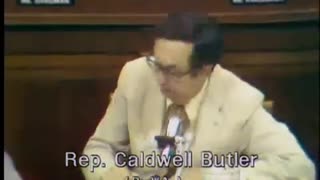 8:57:26
8:57:26
The Memory Hole
2 months agoNixon Impeachment Hearings Day 7 (1974-07-30)
832 -
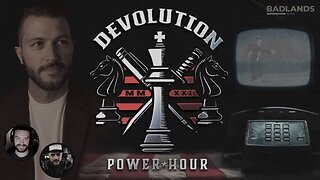 LIVE
LIVE
Badlands Media
21 hours agoDevolution Power Hour Ep. 351 Live From Plymouth
18,722 watching -
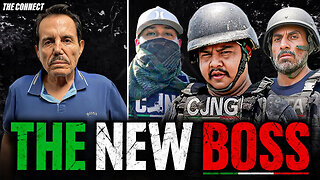 1:18:58
1:18:58
The Connect: With Johnny Mitchell
6 hours ago $0.72 earnedThe Terrifying Rise Of The Nuevo Jalisco Cartel-- Mexico's Most Powerful Criminal Organization
11.1K4 -
 15:22
15:22
Forrest Galante
1 hour agoPrivate Tour of the World's Largest Pond Facility
11.4K3 -
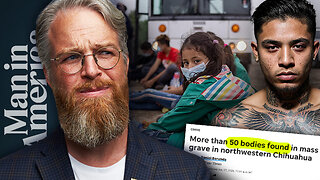 51:38
51:38
Man in America
9 hours agoSINISTER: Cartel Child Trafficking Network Exposed by Investigative Journalist w/ Hollie McKay
20.8K2 -
 LIVE
LIVE
DLDAfterDark
1 hour ago $0.04 earnedDLD Live! What is "The Best" Camo For Your Gear & Equip??
144 watching -
 33:13
33:13
Beach Broadcast
7 hours ago5/3/2025 - Trump Effect and Comms! Big week ahead!
18.8K35 -
 11:39
11:39
Tundra Tactical
4 hours ago $1.13 earnedSurprise Releases For the Trailer Park & The Micro-Brewery.
26.8K7 -
 19:51
19:51
Bearing
15 hours agoMy VAMPIRE WIFE is in a SATANIC MURDER CULT (Allegedly)🧛♂️🔪🩸
40.6K29 -
 13:08
13:08
Exploring With Nug
11 hours ago $2.86 earnedWe Explored a Lake with an Underwater Drone — Here's What We Found!
44.3K3